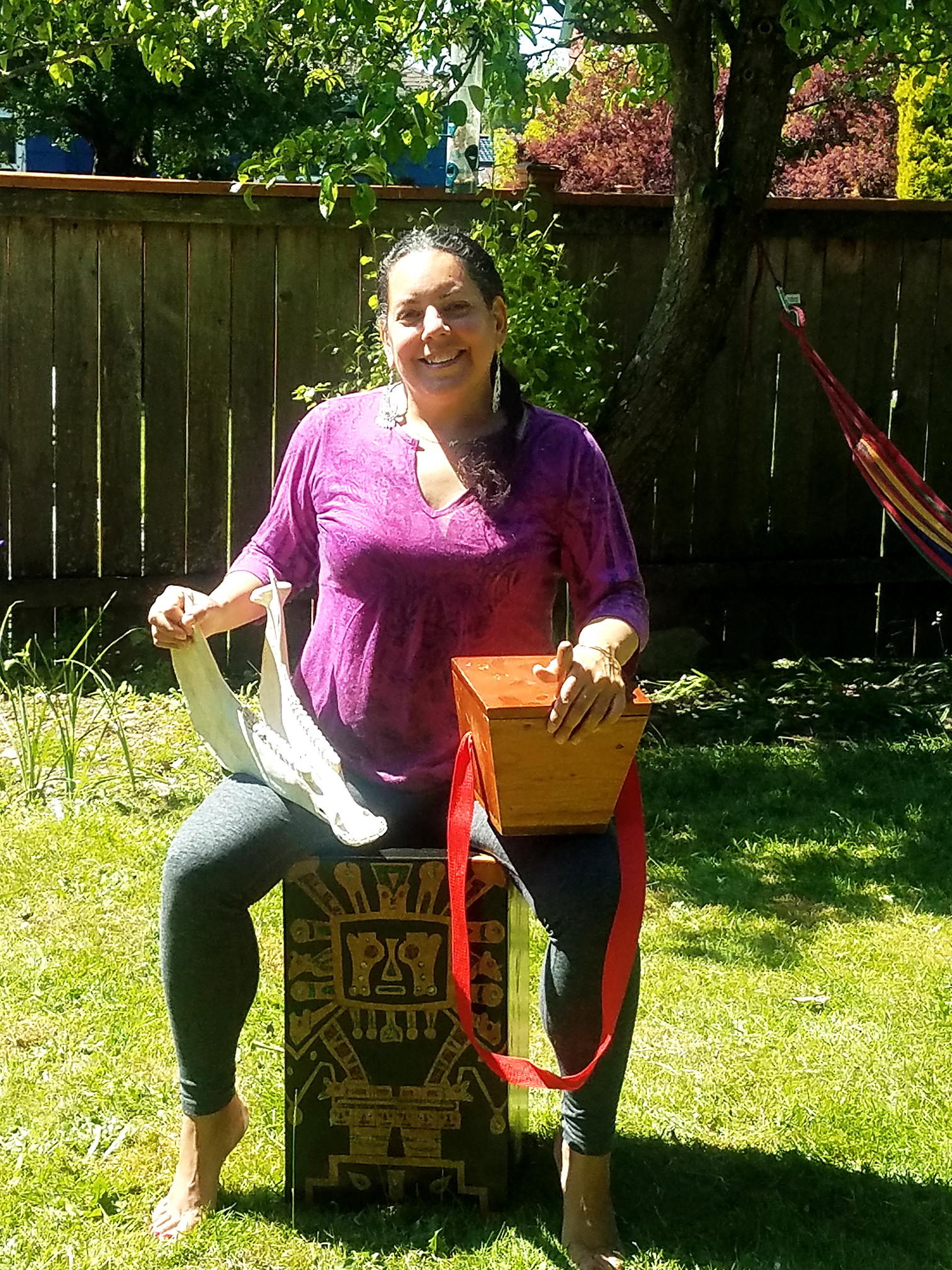Youngest of 5 siblings and born in Lima, Perú, Mónica Rojas is an anthropologist who seeks to spread the presence of the afro-latino community with her dance as well as her performances with the cajón. Mónica is actually one of the founders of MAS and has been successful in connecting many afro-latino people in Washington in order to make the community more visible.
It started when Mónica was 15 years old and witnessed a couple dancing marinera on the street. This sparked a new passion in her which ended up leading to her becoming a national dance champion just two years later. This new passion led her to seek out new kinds of people. Dancers as well as music makers. These artists were usually found at certain types of clubs that Mónica’s parents didn’t really approve of. They would tell her that they didn’t want her living a ‘bohemian’ lifestyle. They were very protective of their youngest daughter and they had believed her main motive for sneaking out to the clubs was just to party. Although it took some convincing, Mónica wasn’t alone. Before her parents came around her sister Cecilia, who is twelve years older, not only gave Mónica her first cajón, but she also lied to their parents so that Mónica could go enjoy the time at these clubs. Eventually, her parents realized that she was serious about dancing as well as playing the cajón. They finally understood that she wanted to do more than party. She wanted to express herself by making beautiful visual and auditory forms of art.
When asking how dancing and playing the caj́on makes her feel she explained the two as almost two sides of the same coin. Playing gives her almost an external happiness. It lets her create and it lets her connect with the people around her. Dancing is more of an internal happiness. She can’t even imagine her life without these two art forms. They not only played a huge part in her teenage years but in her adult years as well. She used her dancing and her music to specifically bring light to the afro-peruvians that she noticed were being almost ignored. Many people don’t even know there are black people in Peru and she wanted to change that drastically. This is her life mission and it’s spread from afro-peruvians to afro-latinos in Washington. She knows she’s accomplished so much and being a leader, an educator, and an artist proves her point.
In 1994 Mónica was asked to give a lecture on afro-peruvian culture at a university in Oregon. She was asked again in 1995 and the next year began studying anthropology in the United State. She used her newfound knowledge of anthropology in order to start a project in 2009. ‘De Cajón Project’ was a group of people who used things like school presentations, assemblies, presentations, and week-long workshops in order to teach people about the presence of afro-latinos (specifically afro-peruvians). When it comes to MAS, it didn’t really start out as a program but as a research project of 2013 with other afro-latino artists. It started out as an art and education season but they eventually decided that it would be very effective if turned into a full program after such a positive response from the community. Mónica’s creativity, and resilience has spread, making it so that many people are able to witness the intricacy of her art as well as its beauty.












